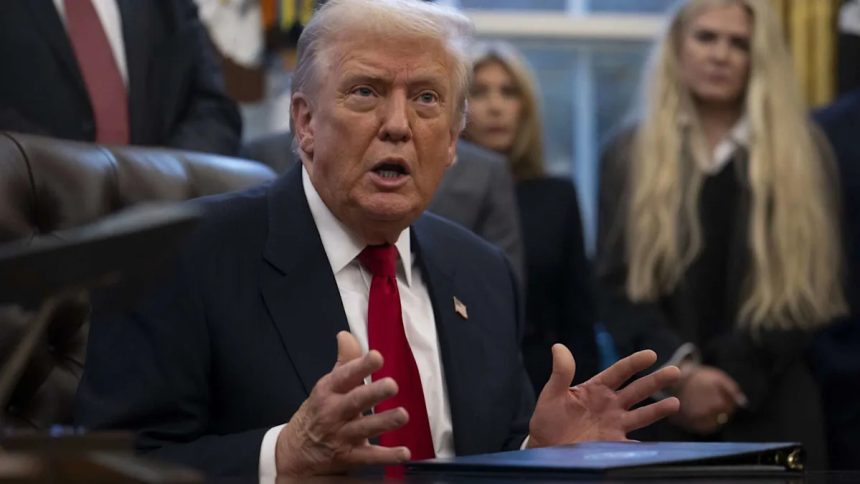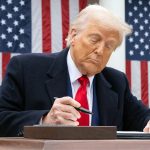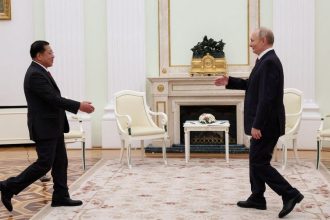President Donald Trump’s proposal to deliver huge stimulus checks to many American households is the latest bit of fiscal fantasy to emerge from the White House.
In a post on Truth Social, Trump promised checks of $2,000 to low- and middle-income Americans, supposedly to be funded out of tariff revenue. It’s not the first time Trump has floated the idea of a “tariff dividend,” but the latest announcement comes as the administration grasps wildly for a solution to Americans’ perceived “affordability” issues.
After delivering the checks, the remaining tariff revenue would be used to pay down the national debt, Trump wrote in a post on Monday.
All of this is quite unserious. Let’s do the math.
It’s unclear exactly who would qualify for these stimulus checks, but the Tax Foundation’s Erica York estimates that sending $2,000 checks to everyone who earns less than $100,000 annually would cost about $300 billion. If the income cutoff is higher, the total cost would grow. If children or other dependents are included, the cost would grow. So we should regard that $300 billion as a conservative estimate.
Meanwhile, Trump’s tariffs are expected to generate between $183 billion and $228 billion this year, according to the Yale Budget Lab’s estimates.
In short, the stimulus checks would cost more than the tariffs bring in. That means there would be no leftover money to use to “pay down” the national debt. The checks would actually add to the deficit instead.
Indeed, the very idea that the tariffs are going to “pay down” the national debt is detached from reality, even if you leave the stimulus checks out of the discussion. The federal government ran a budget deficit of $1.8 trillion last year, and will likely run a similarly sized deficit this year.
You’d have to eliminate that whole deficit before starting to pay down the national debt—because the debt is just the accumulation of budget deficits over time. It’s true that Trump’s tariffs may make a small dent in the budget deficit, but there is no reality in which tariffs alone are bringing the federal budget into balance, much less reducing the national debt.
(And, remember, the Trump administration went before the Supreme Court less than a week ago to argue that all this tariff-related revenue was insignificant, and that the court should judge the tariffs as regulations rather than taxes.)
A $300 billion stimulus plan would also risk kicking off another round of higher inflation. Studies found that stimulus checks sent during the COVID-19 pandemic contributed to the surge in inflation during 2022 and 2023. It is the lingering effects of that inflationary period that Trump is now trying to address—but promising another round of stimulus would risk repeating the mistake.
At least some top administration officials seem to realize this is a bunch of nonsense.
On Sunday, Treasury Secretary Scott Bessent told ABC News that the stimulus checks might be more metaphorical than physical. “The $2,000 dividend could come in lots of forms, in lots of ways. It could be just the tax decreases that we are seeing on the president’s agenda—no tax on tips, no tax on overtime, no tax on Social Security, deductibility on auto loans,” he said.
Kevin Hassett, director of the White House’s National Economic Council, also appeared to backpedal from the idea during an interview with Fox News on Monday.
But Trump tends to get what Trump wants, regardless of how foolish or nonsensical. If that’s the case here, the president may succeed at nakedly buying some temporary good feelings from the electorate in exchange for blowing another hole in the federal government’s leaky finances.
The post Tariff Stimulus Checks Are an Unserious Idea appeared first on Reason.com.









